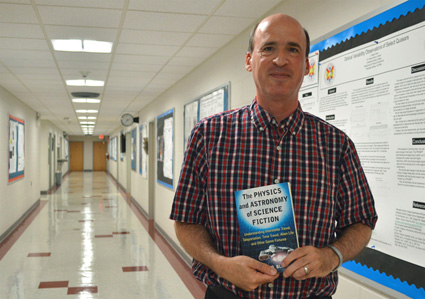"I have loved science fiction since I was a kid," says Bloom. "But I got the idea to write this book after teaching honors seminars about science fiction with [English Professor] Steele Nowlin and [Philosophy Professor] Marc Hight. I had a lot of notes from my preparation for those classes and I just started developing them into book form."

In his book, Bloom takes a look at how science and technology are presented in a variety of science fiction movies, television shows, novels, and short stories. From Lost In Space in the 1960s to the more recent show Fringe, Bloom discusses the accuracy of known technology, like robotics and space travel, and the plausibility of common science fiction ideas, like alien life and time travel.
"The Martian did a really good job, and I have been a fan of 2001: A Space Odyssey for a long time because a lot of what they did is actually correct. The farther into the future stories are set, the less plausible they get because they rely on technology that might not ever exist. When it comes to time travel there are some logical problems, like 'what if you went back in time and killed your ancestors.' Physics has to coexist with logic, but it's nice to speculate."
In order to pique his students' interest, Bloom brings discussions about both the implications and plausibility of the technology in science fiction into his introductory physics classes. By doing this, he engages his students in thoughtful conversations about science, and they get to indulge in popular culture in an academic setting.
Bloom's academic focus is on the radiation emitted by blazars, highly energetic centers of giant galaxies. As he thinks about the mysteries of distant space and advances in technology, he says, "Long distance space travel similar to what we see in science fiction would be really fascinating. The problem is that we don't have a way of creating or harnessing the energy required to make that kind of travel possible. In my lifetime, however, I would like to see us send a small probe to another star."
From his childhood to now researching mysteries of deep space, Bloom already has seen much of the fiction of science fiction become reality. He may yet get to see deep space travel and other fixtures of the sci-fi genre become realities, leading to fascinating discussions and many revisions of his book.
The Physics and Astronomy of Science Fiction